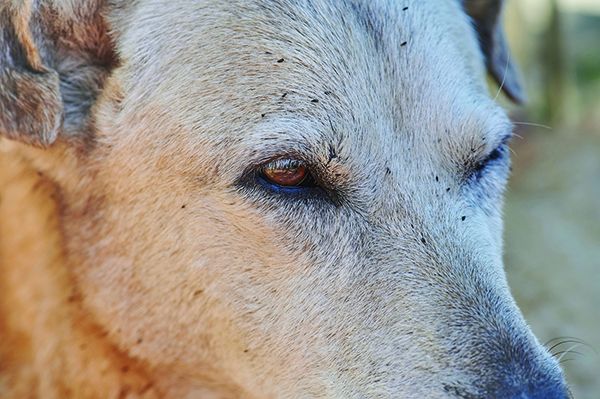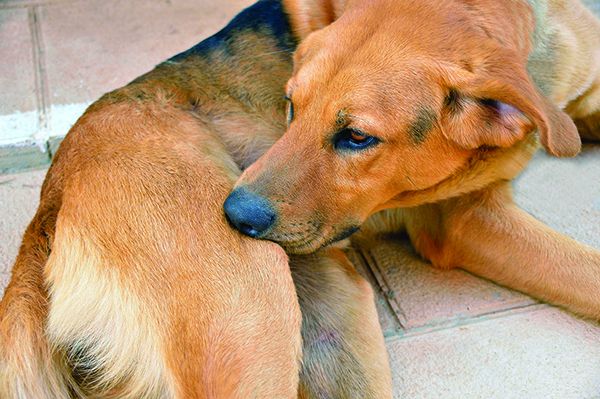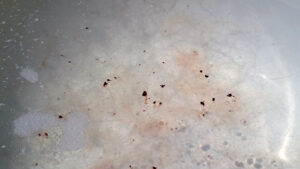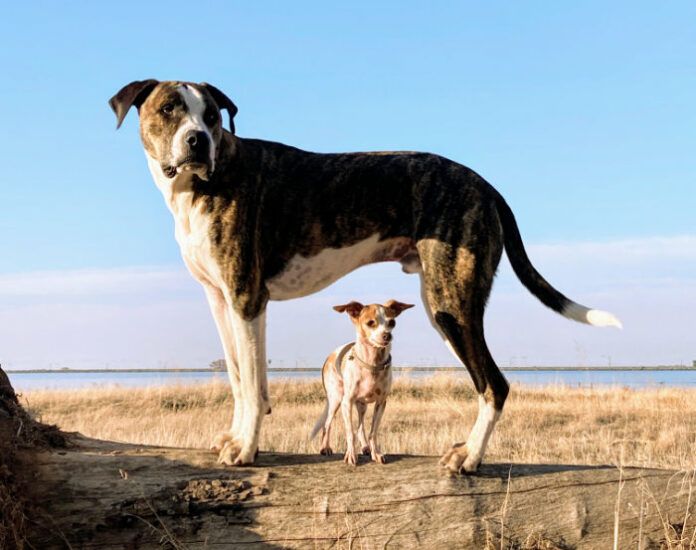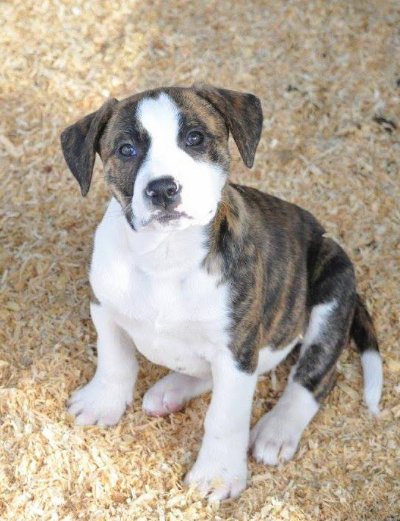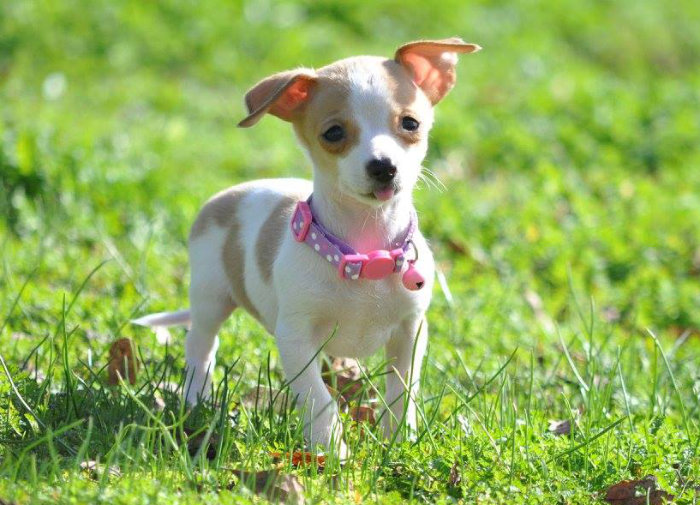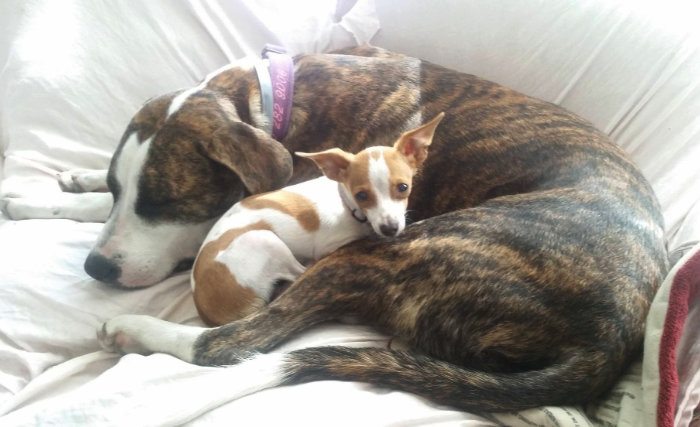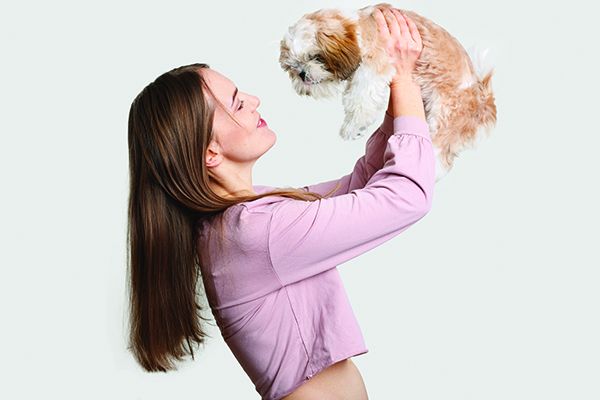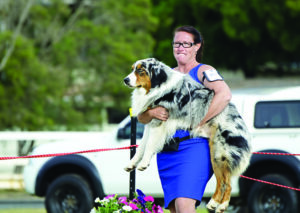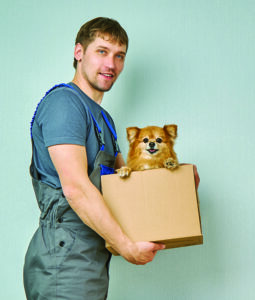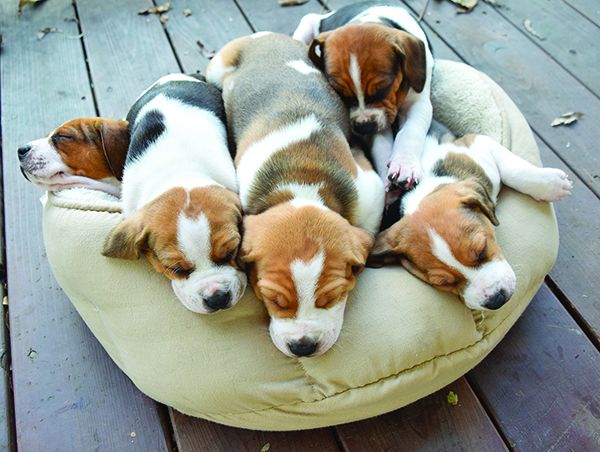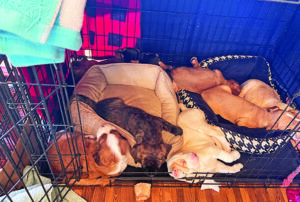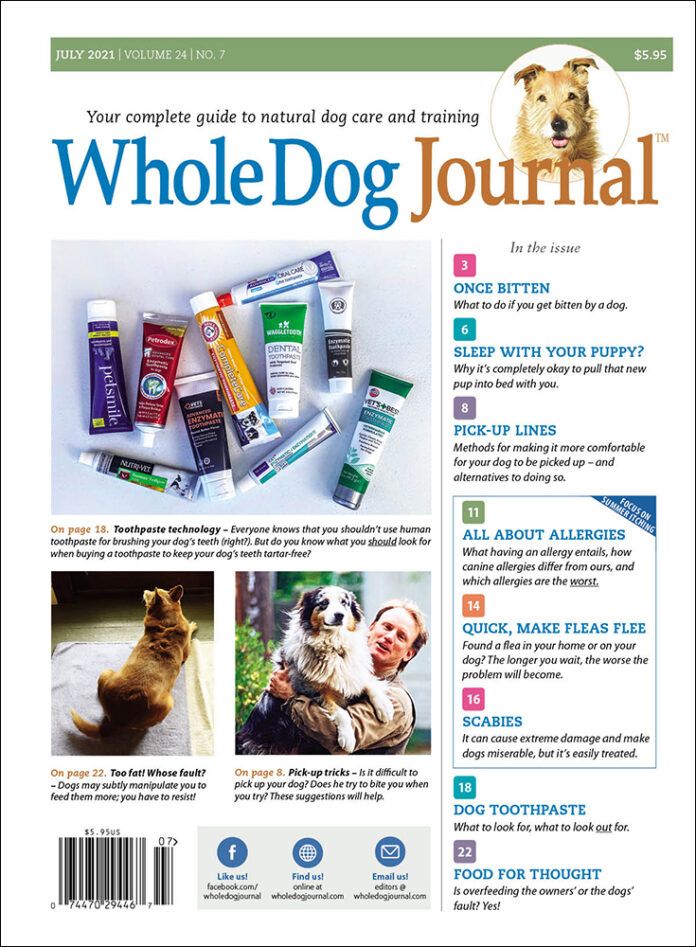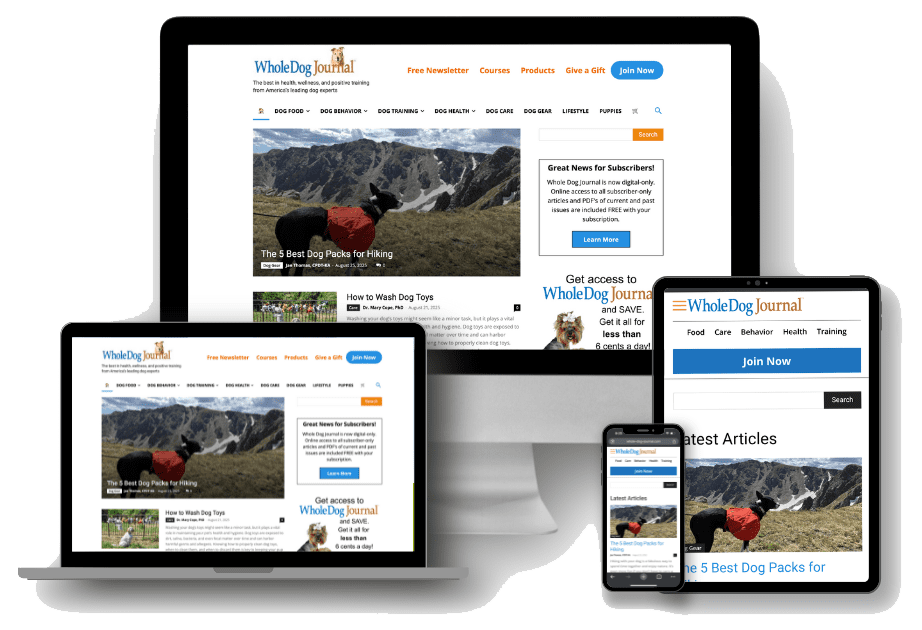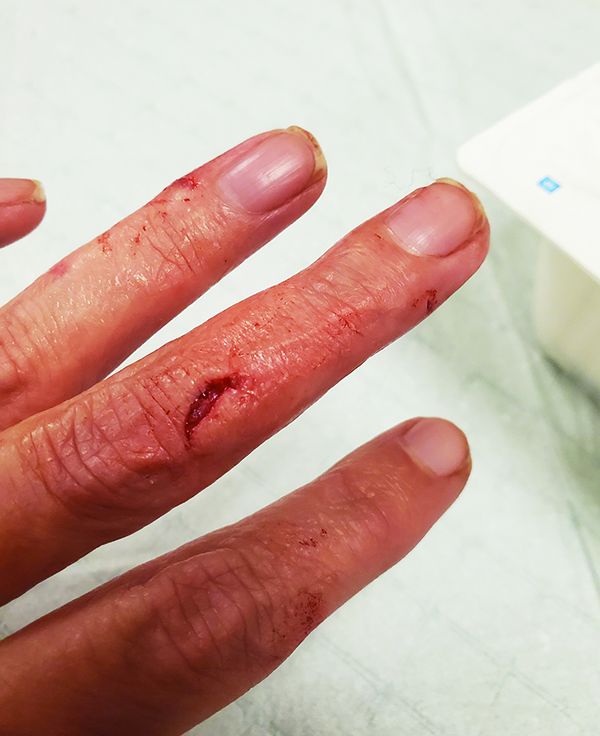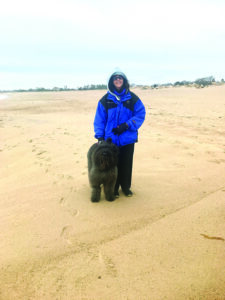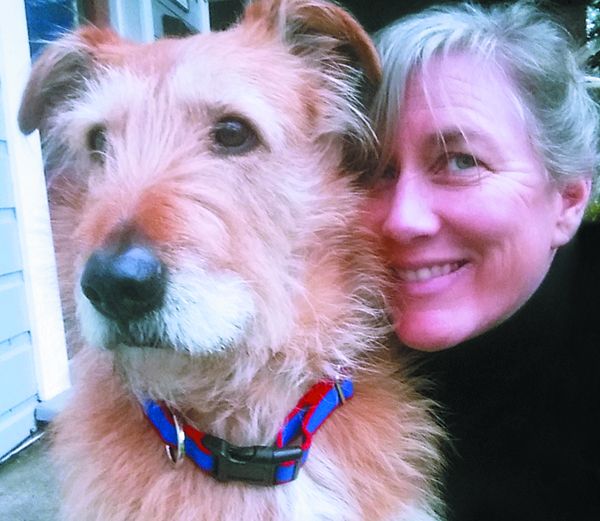Nobody thinks fleas are good for dogs. But do you know why they are bad? And that they are bad for you and your family, too?
Fleas have been around for centuries. They carry organisms that cause disease in both animals and humans. They were the vector for the bubonic plague that killed millions of people back in the Middle Ages. Flea-borne diseases you’re more likely to see in this day and age include parasitic larvae that infect the skin and eyes; rickettsial bacteria that cause fever and systemic illness; and Bartonella, the bacteria that causes cat scratch fever.
Fleas also carry tapeworms (Dipylidium caninum). If your dog swallows a flea while chewing at his flea bites, he can end up with tapeworms in his intestines. Owners usually become aware that their dog has tapeworms when they see rice-like segments in the hair around the dog’s anus or in the dog’s feces. These segments are actually just tiny pieces of very large, long worms. Yuck.
Fleas suck a lot of blood. They can consume enough to cause a life-threatening anemia, especially in young puppies of any breed and in toy-breed adult dogs. This preventable situation requires intensive veterinary intervention, including blood transfusion, if the dog is to survive.
As if that weren’t enough, fleas cause considerable discomfort for your dog. Flea saliva contains histamine-like compounds and other irritating substances that result in inflammation and itchiness around the bites. If your dog happens to be allergic to fleas, this inflammation and itch is amplified exponentially. One flea bite can make a flea-allergic dog’s entire body break out!
BREAK THE FLEA LIFE CYCLE
In order to effectively prevent fleas or treat a current flea problem, it is important to understand the life cycle and habits of the flea.
The adult fleas you see on your dog are not the biggest issue. They make up less than 5% of the problem. The more important 95% lives in your home environment in the form of adult fleas and pre-adult flea stages (eggs, larvae, and pupae). Each adult flea only lives a few weeks.
So, in and of itself, one flea may not seem like a big deal. The problem is, a female flea lays approximately 50 eggs a day – that’s 50 eggs a day, for 20 days, or about 1,000 eggs laid before that one flea dies.
It takes at least three weeks for each egg to go through three molts and become an adult. Let’s say half are female. So now we have 500 fleas, laying 50 eggs a day, for 20 days, which equals 500,000 flea eggs laid in your home, within six weeks of one flea entering the premises. The female half of these 500,000 fleas will lay 50 eggs a day, and before you know it, you are up to 12.5 million flea eggs in your home.
ENVIRONMENTAL SOLUTIONS FOR FLEAS
So, if you have an active flea problem, it is important to include this environmental population in your treatment plan. An integrated flea-control program includes killing adult fleas, both on the dog and in the environment, as well as eliminating and preventing pre-adult flea stages from the environment.
For eliminating existing fleas and pre-adult fleas from your home, heavy vacuuming daily is recommended. Be sure to discard your vacuum bag or the bagless debris full of fleas and pre-adult fleas; if you have one of those bagless vacuums, make sure you dump it into a bag you can seal after vacuuming. Be aware that the heaviest burden of eggs and larvae will be wherever your pet jumps down, like from a bed or chair, as lots of flea eggs and larvae fall off the dog when he impacts the floor.
Also, it’s important to know that flea larvae do not like light. This means they migrate to darker areas, like underneath furniture, so be sure to focus on these areas. Don’t forget about your car if your dog has been in it, and wash all bedding (yours and your dog’s) in hot water regularly.
If you are not adverse to using an insecticide on your carpets and upholstered furniture, I recommend using an area spray (not a bomb) that contains an adulticide (ingredient that kills adult fleas) and an Insect Growth Regulator (IGR).
IGRs interfere with the progressive development of the pre-adult fleas, either stopping eggs from hatching (one example is the drug lufenuron), or preventing larvae from becoming pupae (pyriproxifen, s-methoprene), effectively preventing them from becoming biting, reproducing adults. Using an area spray instead of a bomb means you can direct the spray where it’s needed, including under furniture, as previously discussed.
My favorite area spray is Knockout spray by Virbac. Used as directed, this product is considered safe. You and your pets should not contact sprayed surfaces until they are completely dry, however. For severe flea infestations, hiring an exterminator can be extremely helpful.
If your yard is sunny and dry, there is usually no need to treat this area. Keep the grass cut short. If your yard is heavily shaded and moist, you might consider using an area treatment to knock down any existing flea population outdoors.
If you prefer not to use insecticidal sprays in your home or yard, don’t lose hope. Keeping all resident pets on effective flea preventative products, (discussed in the next section), will slowly whittle away at your existing flea population. It will take six to eight months to accomplish this, and your dog may continue to experience annoyance with fleas during this time, but if you keep the protection on your dog up to date, the existing flea population will eventually be extinguished.
Oral medications that are fed to your dog to repel and kill fleas are regulated by the U.S. Food and Drug Administration. Topical pesticides that are used on your dog to repel and/or kill fleas are regulated by the U.S. Environmental Protection Agency. For an exhaustive list of FDA- and EPA-approved flea, tick, heartworm and other parasite preventatives for dogs, you can visit the Companion Animal Parasite Council (CAPC)’s website, capcvet.org, and click on the Quick Product Reference Guide.
FOR YOUR DOG
You’ll never get rid of fleas if you don’t treat your pets. A good integrated flea-control program requires that all pets on the premises be treated with a safe and effective flea adulticide. This will kill any existing adults and kill any new ones that come along, before they reproduce, one hopes. I think it’s a good idea to use a product that also has an IGR, as this acts as a failsafe for any eggs that happen to be laid before the adult flea is killed.
There are many good products available at this time, so talk to your veterinarian about which would be best for you. You can choose from safe and effective oral products (e.g., Nexgard, Bravecto, Simparica, Simparica Trio, Trifexis), topical products (e.g., Advantage products, K9 Advantix products, Bravecto, Frontline products, Revolution products), or a long-acting collar (Seresto).
It is important to note that all these products vary a bit in how they work and what they prevent in addition to fleas. Some contain IGRs, some don’t. Some prevent ticks, some don’t. Some require the flea to bite to die, some repel before the bite; this difference is of importance for the flea-allergic dog, who reacts to the bite. Some flea preventatives also prevent heartworms, which means it’s important for your dog to have a negative heartworm test before using these products. When in doubt, it’s always best to check with your veterinarian.
Once any current flea infestation has been eliminated, if you keep all your pets on appropriate flea preventatives all year round, treating the environment should never again be necessary. Keeping all pets on preventatives all year round is important, as fleas and pre-adult fleas (especially the very hardy pupae), can easily overwinter in your warm, comfortable home.
DON’T WAIT IF YOU SEE A FLEA: GET TO WORK
I hope that if you have a flea problem, this information will help you get through it. And I hope that if you don’t have a flea problem, this information will help you avoid one. A familiar, old cliché fits too well here not to mention it. When it comes to fleas, an ounce of prevention is definitely worth a pound of cure.


